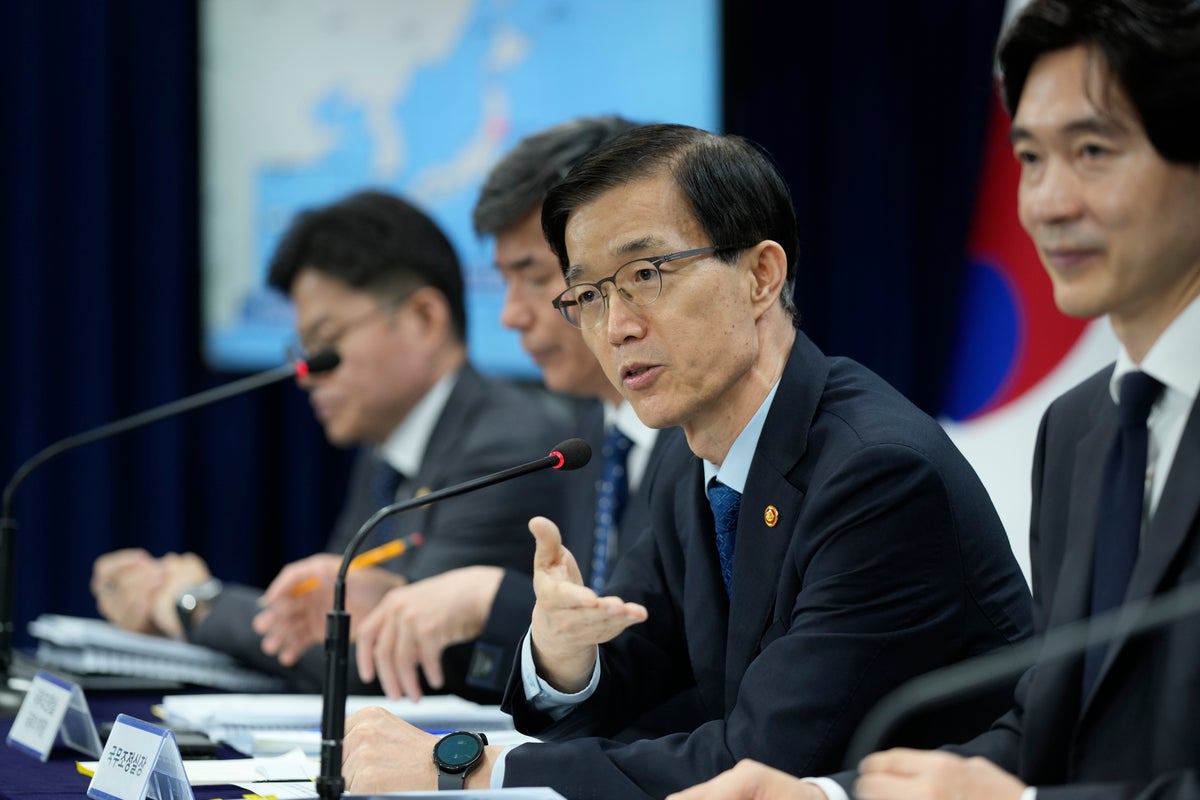
South Korea’s government on Friday formally endorsed the safety of Japanese plans to release treated wastewater from the Fukushima nuclear power plant into sea as it tried to calm people’s fears about food contamination.
Seoul’s assessment was based on a 22-month review by government-funded scientists and aligned with the International Atomic Energy Agency’s views. The agency greenlit the Japanese discharge plans this week, saying the treated wastewater would meet international safety standards and that its environmental and health impact would be negligible.
Even before Friday’s announcement, South Korean officials have been actively campaigning to dissolve the public’s unease about the wastewater release, holding daily briefings to address what they describe as “excessive fears” and tightening radiation tests on seafood imported from Japan.
Conservative lawmakers from President Yoon Suk Yeol’s ruling party have even toured seafood markets to drink sea water fetched from fish tanks in a bizarre gesture to certify food safety, although no wastewater has been pumped out from Fukushima yet.
Public concerns persist as retailers report an increase in sea salt sales, apparently driven by consumers looking to stock up ahead of the release.
Liberal opposition lawmakers, who control the majority in South Korea's parliament, have vowed an all-out fight against the Japanese discharge plans. In a fiery speech Friday, Democratic Party leader Lee Jae-myung, who narrowly lost to Yoon in the 2022 presidential election, attacked the credibility of the IAEA assessment and accused Yoon’s government of putting the nation’s health at risk by desperately trying to improve relations with Tokyo.
During their news conference in Seoul, South Korean government officials and scientists repeatedly insisted the contamination levels of the Fukushima plant’s wastewater would be within acceptable safety standards as long as the Japanese treatment systems work as designed.
“We confirmed that if the water release is carried out as planned, the discharge standard and target level (of radiation) would be consistent with international standards,” said Yoo Guk-hee, chairperson of South Korea’s Nuclear Safety and Security Commission.
The safety of Fukushima’s wastewater has been a sensitive issue for years between the U.S. allies, who have been working in recent months to repair relations long strained over wartime historical grievances to address shared concerns, like the North Korean nuclear threat and China’s assertive foreign policy.
South Korea’s assessment was partially based on observations by a team of government scientists led by Yoo who were allowed to tour the Fukushima plant in May to review the discharge plans. Japanese Prime Minister Fumio Kishida agreed to that visit during a May 7 summit with Yoon in Seoul, in a show of his desire for improved ties.
Yoo said his team focused on verifying the capacities of the plant’s advanced liquid processing system, or ALPS, which is designed to reduce dozens of types of radioactive isotopes in the contaminated water to safe levels.
A massive earthquake and tsunami in 2011 destroyed the Fukushima plant’s cooling systems, causing three reactors to melt and release large amounts of radiation.
Tokyo Electric Power Company Holding, which operates the facility, has been storing the ALPS-treated water in hundreds of tanks that now cover most of the plant and are nearly full. Japanese officials say the tanks must be removed to make room to build facilities for the plant’s decommissioning and to minimize the risk of leaks in case of another major disaster. The tanks are expected to reach their capacity of 1.37 million tons in early 2024.
Japan first announced plans to discharge the treated water into the sea in 2018, saying that the treated water will be further diluted by seawater before being released in a carefully controlled process that will take decades to complete.







